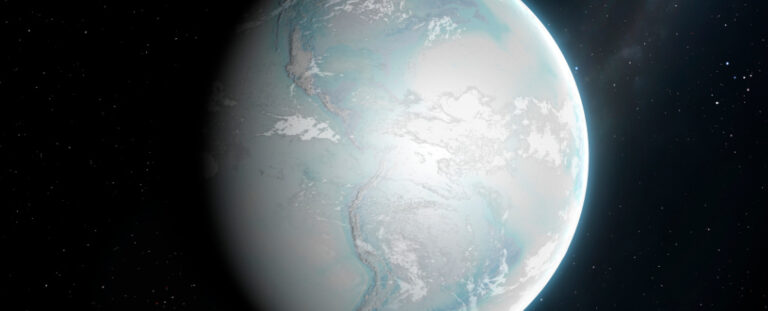Earliest Glaciers Unearthed by Scientists Revealing Ancient Traces
A group of scientists, led by Axel Hofmann, an archaean geologist from the University of Johannesburg, has made a remarkable finding. They believe they have uncovered evidence of the oldest glaciers ever found, preserved within ancient rock formations beneath South Africa’s largest gold deposits. This discovery holds the potential to provide valuable insights into the early stages of Earth’s tumultuous history and shed light on the formation of the goldfields.

The team conducted a thorough analysis of rock beds near Durban, situated on the eastern coast of South Africa. These rock formations contain glacial deposits estimated to be approximately 2.9 billion years old, making them the most ancient glaciers known to date on our planet.
Over the course of billions of years, rocks of such antiquity undergo numerous geological transformations. Fortunately, the rock layers, known as the Pongola Supergroup, have remained remarkably undisturbed since their formation when an inland sea flooded the region.
University of Oregon geologist Ilya Bindeman explains, “This area stands out as one of the few remaining intact and unchanged regions from the early Earth.” He further describes the discovered deposits as fossilized glacial moraines, which represent the debris left behind by a glacier as it gradually melts and recedes.
Bindeman and his colleagues conducted measurements of oxygen isotopes in samples of sandstone and shale obtained from the Pongola Supergroup. Their analysis revealed that these samples exhibited the lowest levels of oxygen-18 among comparable deposits examined thus far. Additionally, they observed significantly elevated levels of oxygen-17, suggesting that these rocks were formed under colder temperature conditions.
Bindeman explains, “These findings strongly indicate the presence of ice. When we combine this geochemical evidence with the evidence of moraines, it unequivocally points to the existence of glaciers— the most ancient glaciers ever discovered on Earth.”

During a recent international geochemistry conference, Bindeman presented the findings derived from a peer-reviewed paper co-authored with Hofmann. Oxygen isotopes, stable variations of oxygen distinguished as ‘heavy’ or ‘light’ based on the number of neutrons in their nucleus, play a crucial role in understanding the conditions under which ancient rocks were formed.
In their paper, Bindeman and Hofmann state, “Given that the oxygen isotopic composition of surface materials is greatly influenced by latitude and climate, we have employed triple oxygen isotope analysis to investigate their origins.” The data they gathered “reveal a progressive cooling of the surface environments that eventually led to glacial conditions approximately 2.9 billion years ago.”
The presence of these glaciers in the specific location raises intriguing questions about cooling periods in Earth’s ancient history. Our planet has experienced at least two instances of global glaciation relatively recently, around 650 and 700 million years ago. However, research debates whether these episodes, known as ‘Snowball Earth,’ resulted in a completely frozen wasteland or a partially frozen state, leaving room for discussion regarding the extent of global freezing.
Hofmann mentions, “Scientists speculate that such near-global glaciation may have occurred a couple of times in more recent history. If true, this would be the earliest recorded occurrence of such a global cooling period.” Another hypothesis discussed in Bindeman and Hofmann’s paper suggests that the continent from which South Africa originated might have been closer to the poles when it experienced glaciation.
Hofmann emphasizes the scientific interest in both possibilities, stating, “Either scenario holds scientific significance.”
Nevertheless, unraveling the ancient secrets embedded within rocks is a challenging endeavor, and no single study can completely rewrite Earth’s early history. Andrey Bekker, a geochemist from the University of California, Riverside, who was not involved in the research, suggests that this study is likely to inspire further investigations. Bekker remarks, “Evidence for glaciation of this age has been the subject of intense discussion and debate for decades based on sedimentological evidence.”
Nonetheless, geoscientists have limitations in their ability to extract information solely from the arrangement of sediment and rock layers, as well as the impact left by past glacial activity.
According to Bekker, the analysis of oxygen isotopes conducted by Bindeman and Hofmann introduces an entirely fresh perspective to the ongoing debate, reinforcing the notion that the discovered features are indeed remnants of extremely ancient glaciers.
Consequently, it is anticipated that these novel findings will undergo rigorous examination and scrutiny.
The study was published in Geochemical Perspectives Letters, with further results presented at the European Association of Geochemistry and the Geochemical Society’s Goldschmidt Conference.
Do not forget to share your opinion with us to provide you with the best posts !




0 Comments